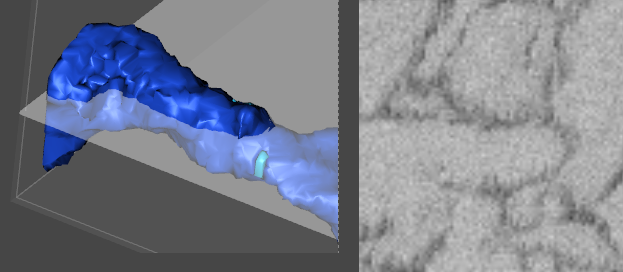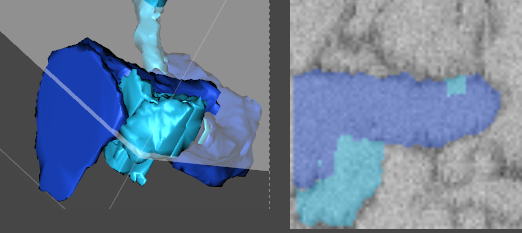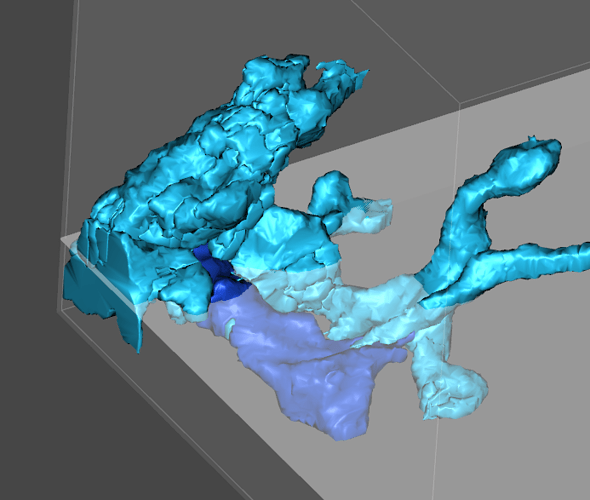From time to time I am getting into situations where there is very hard to decide what is part of what. Most of the time its well formed “pipe” going into a sort of strange undifferentiated “balloons” (cloud-like, not really circular formations made up of even smaller badly differentiated “granules”). Not having an xray vision, at first I try to find boundaries of that “balloon”. Sometimes it works and makes sense (on 3D display mostly) but many times it just starts meaninglessly filling-up screen with amorphous formations.





